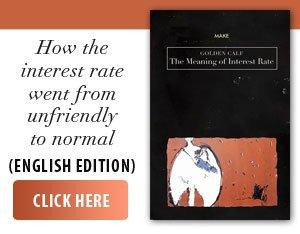The third quarter of 2025 was dominated by the efforts of the Government led by Prime Minister Ilie Bolojan to restore macroeconomic balance through firm, often unpopular measures. After a first semester marked by a deficit of 3.68% of GDP and the risk of losing European funds, the Executive adopted a large fiscal package in July: increasing the standard VAT rate to 21%, creating a single reduced rate of 11% for basic products, increasing excise duties on alcohol, tobacco and fuels, additional taxation of dividends and large profits, but also introducing health contributions for pensions higher than 3,000 lei. In parallel, wage and pension freezes for 2026, public employment restrictions and a deep overhaul of the school scholarship system were announced, in an effort to reduce structural spending and regain the trust of financial markets. The measures were harshly contested by the opposition, but were validated by the Constitutional Court and were promulgated by President Nicuşor Dan, signaling a firm change of direction in Romania's fiscal policy. The first effects were quickly visible: interest rates on government bonds were slightly reduced, and international rating agencies maintained the country's ratings, with cautious outlooks.
August and September brought the continuation of reforms and the adoption of the second package of fiscal and structural measures, with a major impact on the economic and political environment. The government moved forward with the reform of special pensions, the restructuring of state-owned companies, the reduction of the budget apparatus and the introduction of additional taxes on large fortunes, despite trade union protests and successively rejected censure motions. It was a demonstration of political strength, but also evidence of the enormous pressures hanging over public finances. On the economic front, the renegotiation of the National Recovery and Resilience Plan was successful, with Romania obtaining a preliminary agreement for 21.62 billion euros, of which 13.56 billion were non-reimbursable, with a commitment to prioritize mature projects and avoid wasting funds. The government thus sent a message of responsibility, promising transparency and the publication of a public investment dashboard, in an attempt to regain the trust of the population and European partners.
However, the pressure on the budget remained strong. Expenditures outpaced revenues, and the budget revision prepared at the end of September confirmed an increase in the estimated deficit to 8.4% of GDP for the full year, with additional spending of 27 billion lei. The Ministry of Finance was forced to continue massive borrowing on domestic and foreign markets, including through issuance of FIDELIS and TEZAUR bonds, while Moody's rating, maintained at Baa3 but with a negative outlook, signaled that structural vulnerabilities persist. In this tense climate, the Government tried to balance austerity with visible social measures - expanding programs for disadvantaged students, increasing scholarships and supporting the digitalization of education - in an attempt to temper social revolt and demonstrate that reform does not exclude solidarity.
The above figures are reflected in the budget execution for the first nine months of 2025, which shows a budget deficit of 102.47 billion lei, equivalent to 5.39% of GDP, even though the Government adopted the first two packages of fiscal measures and a budget rectification. According to the budget execution published by the Ministry of Finance, state revenues increased by 12.3% compared to the third quarter of 2024, up to 466.95 billion lei, supported by a solid advance in collections from income tax, social contributions and excise duties, but also by an acceleration of European funds, which reached over 35 billion lei, almost 43% more than in 2024. The increase in revenues, coupled with stricter collection discipline, was, however, offset by rising budget expenditures, which reached 569.43 billion lei, or 29.9% of GDP. Social assistance spending, driven by pension recalculations and energy compensation, rose by 13.4%, while interest costs, rising sharply to almost 40 billion lei, reflect the burden of an increasingly expensive public debt. Investments rose by 10%, to 82.6 billion lei, but fiscal pressure and the cost of borrowing limit the potential for expansion.
The packages of financial measures have sparked an explosion of social discontent. Civil servants, teachers and health workers have protested in the streets, accusing austerity and lack of dialogue. Amidst the tensions, the National Bank has kept the rate monetary policy interest rates to 6.5%, signaling that inflationary pressures, fueled by the liberalization of the energy market and the increase in VAT, do not allow for monetary easing. Inflation rose to 9.9% in August, and the NBR estimates a slow decline, with a return to the target range only at the end of 2026.
Practically, the end of the third quarter of 2025 finds Romania at a fragile balance point, between recovery and risk.
• July - the first package of fiscal measures assumed by the Government in Parliament
The first month of the third quarter - July - began with a change of pace that Romania has not felt in years: the Bolojan government threw the first fiscal-budgetary package into the market with the clear aim of stopping the slide towards "junk", restoring investor confidence and re-establishing public finances on predictable bases.
The increase in the standard VAT rate to 21% and the single reduced rate of 11% for basic food and medicines, stricter taxation of dividends from 2026, higher excise duties on alcohol, fuel and tobacco, taxation of pensions over 3,000 lei, freezing of salaries and pensions in the public sector in 2026, plus a reform of school scholarships strictly oriented on merit and need, composed the architecture of a "national emergency" announced in Parliament.
The package, passed by assumption of responsibility on July 7 and promulgated on July 25 after the CCR rejected the opposition's appeals, came with an additional budgetary impact estimated at 9.5 billion lei for 2025 and 35 billion lei in 2026, doubled by spending cuts of over 57 billion lei in 2026, and quickly delivered the first signals in the capital markets, namely obtaining falling borrowing costs and estimated savings of 200 million dollars over four years on a Eurobond issue.
As for other measures taken by the Government, the members of the Bolojan Cabinet approved the environmental agreement for the refurbishment of Unit 1 of the Cernavodă NPP, decided to build the Azuga-Buşteni bypass to unblock the Prahova Valley, approved the national strategy for cardiovascular and cerebrovascular diseases 2025-2030, launched the first stage of the electronic road pricing system based on the "polluter pays" principle and made the necessary legislative amendments to the Fiscal Procedure Code to prepare for OECD accession.
Regarding the revenues needed to cover rising budget expenditures, the Ministry of Finance combined internal FIDELIS issuances with massive external outflows: in July, Romania attracted 4.7 billion euros in three tranches, while the first state green bonds channeled 10.85 billion lei towards water, wastewater, sustainable transport, climate adaptation and natural resource protection, with an allocation report published to cement confidence.
Under these conditions, the execution for the first semester showed a structural tension, i.e. a deficit of 69.8 billion lei (3.68% of GDP), soaring social spending, increasingly burdensome interest costs and, therefore, the National Bank of Romania decided on July 8 to maintain the key interest rate at 6.50% and warned that inflation would accelerate with the liberalization of energy and the increases in VAT and excise duties from August 1, against the backdrop of accentuated external imbalances and the decrease in FDI.
July was also marked, politically, by the resignation of Deputy Prime Minister Dragoş Anastasiu, following the press publication of data from a file investigated by the DNA, in which Anastasiu had the status of a witness and in which the official from the Bolojan government admitted that in the past he had paid a "survival ransom" in the face of ANAF pressures, opening a tough debate about corruption and the limits of entrepreneurship in a bureaucratic state. The debate was amplified by the fact that the president of the ANPC, Cristian Popescu Piedone, came under judicial control after allegedly announcing a check at a hotel of a former PNL leader, being immediately dismissed from office by Prime Minister Ilie Bolojan.
The end of July belonged to sports: David Popovici once again became the symbol of Romanian resilience, with world gold in the 200-meter freestyle on July 29 and in the 100-meter freestyle on July 31, achieving a unique double at different editions of world championships, one year after the Olympic gold.
• August - CEISD negatively approves the transaction between E.On and MVM
The last month of summer confirmed that the road to consolidation is long and steep, especially since at the end of July the budget deficit rose to 4.04% of GDP, despite higher revenues from taxes on salaries and income, excise duties and VAT, pressured by the recalculation of pensions, energy compensations and rising interest rates. Under these conditions, the Ministry of Finance opened the seventh edition of FIDELIS with a premiere - 10-year euro bonds, the most sold in the tranche - and ran the TEZAUR program in parallel with yields of up to 7.85%, a sign that the population validates the state as a safe and transparent debtor.
Regarding the country rating, the international agency Fitch reconfirmed BBB-/F3 with a negative outlook, keeping Romania in the investment grade window, but with a firm warning regarding budgetary consolidation. Meanwhile, the Government has initialed aid for strategic industrial projects carried out by the companies Dacia and Draxlmaier, in the logic of reindustrialization and balancing the trade balance.
The NBR doubled its message of caution on August 8, maintaining the key interest rate and anticipating a peak in inflation in the fall. The National Institute of Statistics recorded a rate of 9.9% in August, above the NBR estimates for September, in a context of a rising current account deficit and external debt, mitigated however by foreign exchange reserves at over 65 billion euros.
Also in August, the transaction through which the Hungarian company MVM would have taken over part of the assets of E.ON Romania received a negative opinion from the Foreign Direct Investment Evaluation Committee, the file reaching the CSAT table amid geopolitical concerns and the gradual withdrawal of large foreign companies from the local market.
On the social and political level, the disappearance of former president Ion Iliescu and the establishment of August 7 as a day of national mourning reopened painful discussions about the Revolution and the mining scandals, and on the architecture of the pension pillars, the Government sent to Parliament a project that brings two payment methods - scheduled withdrawal and lifetime pension -, a minimum access threshold, the option to withdraw 30% of the asset upon entering the payment phase and increased information rules, in order to rebuild trust in a key system for demographic aging.
• September - Government adopts budget rectification
The first month of autumn began with a new political and economic stress test: the Government assumed the second reform package on September 1, after approving it on August 29 and rectifying it on September 1, with four motions of censure falling on September 7 and appeals to the CCR largely rejected, leaving the notification to the ÎCCJ regarding special pensions under analysis. Later in October, the CCR decided that the law regarding special pensions for magistrates is unconstitutional, because the Government assumed responsibility for the respective normative act without waiting for the mandatory opinion from the Superior Council of Magistracy.
The second package of fiscal measures and reforms assumed in Parliament by Prime Minister Ilie Bolojan provides for a ceiling of 70% of the last salary and an increase in the retirement age to 65 for magistrates, staff cuts and allowances in autonomous authorities, corporate governance reset in public enterprises with more flexible boards, limited bonuses and an emphasis on real performance indicators, tougher rules against evasion and aggressive optimizations, a tax on large fortunes increased to 0.9% for expensive properties and luxury cars, plus a new architecture of the share capital that raises the threshold to 500 lei for new SRLs and introduces a minimum capital of 5,000 lei above 400,000 lei turnover, with exceptions for startups, business angels and convertible instruments. At the same time, the Government extended the cap on the commercial mark-up on basic foods until March 2026, justifying consumer protection in a climate of food inflation of over 12%, while the business environment complained of competitive distortions.
In terms of social and educational matters, the 2025-2026 school year began on September 8 under the pressure of a massive march by teachers in the Capital for salaries and investments, mirrored by the adoption of a new methodology for scholarships (merit, social, technological, support for minor mothers) of over 4 billion lei, a sign that austerity cannot ignore human capital.
In light of the budget execution at the end of August, which showed a budget deficit of 4.54% of GDP, the Ministry of Finance launched new FIDELIS and TEZAUR issues and proposed the budget rectification published on September 29 and approved on the first day of October by the Government, a rectification that provides for additional revenues of 3.23 billion lei, but also increased expenditures by 27.8 billion lei, especially for interest, social assistance and PNRR projects, as well as cuts where the execution of EU funds was delayed.
In September, the international rating agency Moody's maintained the Baa3 level for our country with a negative outlook, which maintains access to capital, but conditions the investment grade status on the effective delivery of fiscal-budgetary consolidation.
In this financial context, the National Bank of Romania reiterated on September 12 the inflation peak at 9.6-9.7% and a slow decline only towards the end of 2026, citing supply shocks and external imbalances.
In terms of national security, the Supreme Council of National Defense decided in its meeting at the end of September who orders the shooting down of hostile drones or aircraft that violate airspace, setting separate decision-making chains for unmanned aircraft, military and civilian aircraft, a necessary step in the equation geopolitical take on the Black Sea.
Basically, in the third quarter, the authorities in our country combined fiscal shock therapy with monetary prudence, decided to increase financing from domestic and foreign markets, pushed structural reforms in sensitive areas of the state, overcame integrity crises in essential institutions and reconnected public opinion to the themes of the day: how much the lack of budgetary discipline costs us, how quickly we can deliver reforms without breaking social cohesion, how we defend our airspace and how we protect consumers in a volatile market.
Between deficit, inflation, debt, interest rates, the direction to follow remains clear: fiscal discipline, smart investments, a leaner and cleaner state, more competitive markets so that Romania remains bankable, predictable and attractive in a global economy that does not forgive hesitation.


















































